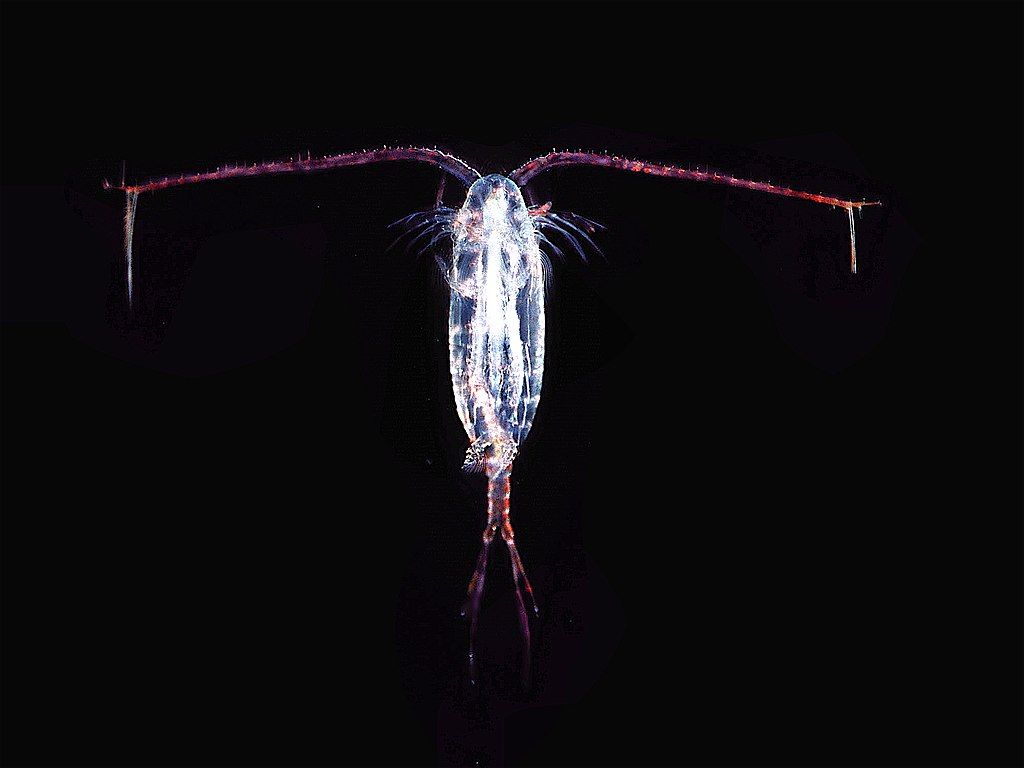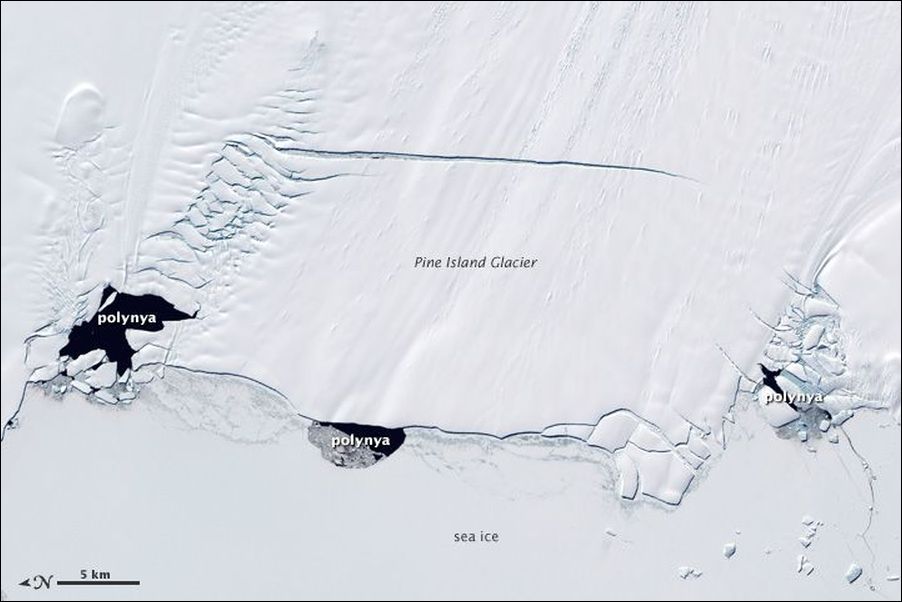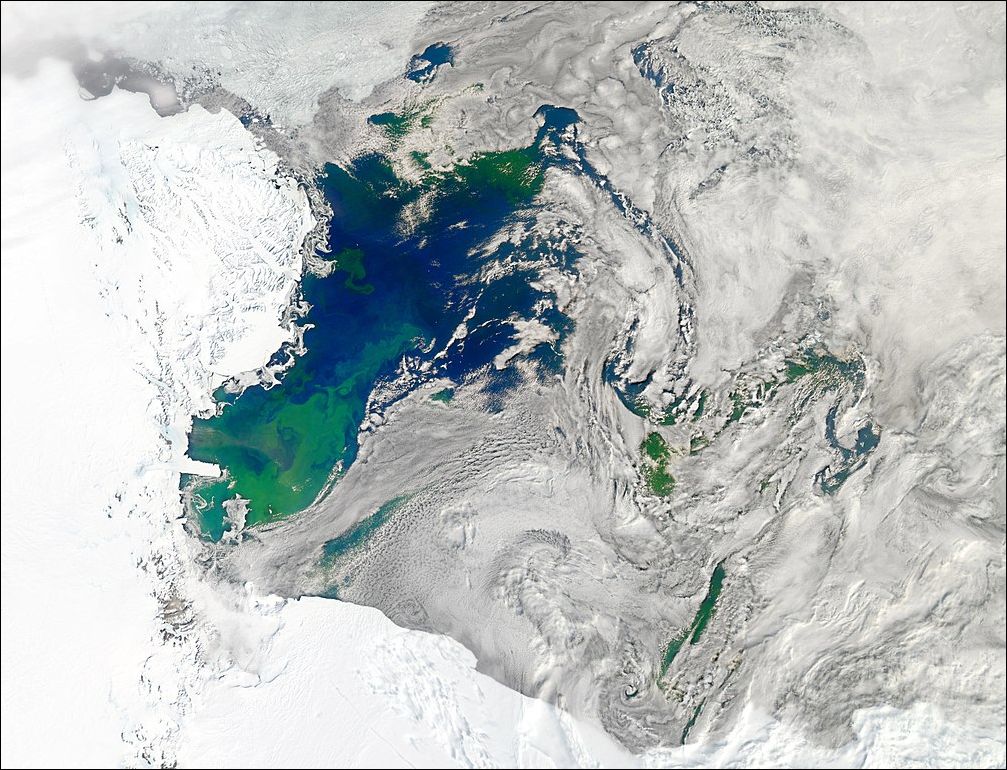
There’s a bird I want to write about but his lifestyle includes such unusual words that we’ll have to learn a new vocabulary before I can introduce him. The bird eats copepods and is fond of polynyas.
What the heck is a copepod (CO peh pod)?
The word “copepod” actually describes the animal it names. “Cope” is from the Greek word for “oar” and “pod” is Greek for foot. So a copepod is literally an Oar-Foot.
Copepods are tiny, usually transparent, crustaceans with oar-like antennae. They live in wet places: oceans, lakes, rivers, streams, swamps, bogs, and even in the water in caves. They are very small, often microscopic, typically only 1-2 millimeters long (0.04 to 0.08 inches). They have huge populations among 13,000 known species. The vast majority live in the ocean. Click here for a video to see them move.
As animals, copepods are at the bottom of the food chain so they ultimately support lots of marine life including creatures as big as whales. They’re the primary food source of the dovekie, the bird who spawned this article, and are especially plentiful in polynyas.
A polynya (po LIN ya) is a big hole of open water surrounded by ice. The word comes from the Russian word for hollow. Two photos below show polynyas in Antarctica.

This polynya in the Ross Sea, shown below, has green phytoplankton that provides abundant food for copepods during the Antarctic summer.

Some polynyas are permanent, others are seasonal. Off the coast of Canada, the North Water Polynya opens every spring between Ellesmere Island and Greenland. When it does, new sunlight entering the water causes a microalgae (phytoplankton) bloom, the copepods swarm to eat it. Dovekies arrive to eat the copepods.
What about dovekies? Read more here –> Birds On Ice: Dovekie.
(photos from Wikimedia Commons. Click on the captions to see the originals)
My curiosity is now peaked. I’m thinking puffins or auks. Can’t wait to find out. I will not Googlecheat 😉